On any given day, your social media feed is likely to produce at least one feel-good story about divers, boaters or fishers successfully freeing a whale or dolphin from entanglement. It’s always with a palpable sense of relief that we see the victim of our ocean trash able to safely swim away. Often, he’ll swims alongside the rescuer’s boat for awhile before heading out, seemingly in appreciation of the service done by his human benefactors. If fortune is with us and we come upon the scene early enough, there’s a reasonable chance that we’ll be able to cut away the restraining mesh and achieve a desirable outcome.
That’s what we’re most likely to gets the views, the clicks and the retweets. But the laws of probability suggest that we would miss the vast majority of these events. For every one cetacean we have an opportunity to save, there will be many, many more who drown in those nets.
This in fact is the case.
Entanglement in fishing gear is by far the leading cause of cetacean deaths. And thus the biggest threat they face from us. The World Wildlife Fund (WWF) estimates that at least 300,000 die in this manner every year. Such a number compels us to delve into topics like sustainability, reducing bycatch, the efficacy of our seafood labeling laws, and so forth. All critically important topics, which we at CCA cover frequently in this forum. The numbers convey the sheer scale of an ongoing tragedy, and the enormous damage done by the fishing industry.
Why put the blame squarely there? The most recent estimate of the mass of fishing gear abandoned in the oceans each year lands at approximately 700,000 tons. While we tend to focus our attention on plastic straws, bags, and other consumer goods, the real culprit tends to get a free pass. According to Sea Shepherd:
“The single biggest single source of plastic choking out the life in our oceans is made up of purposefully or accidentally lost, discarded, or abandoned fishing nets, ropes, FADs (fish aggregating devices), long lines, and plastic fishing crates and baskets.”
300,000 whales, dolphins and porpoises dead after getting entangled in fishing nets. Every year. As the international fishing industry grows to meet the needs of an increasing human population, the problem threatens to get worse. A number of cetacean species barely escaped being hunted to extinction. Now, fishing gear entanglements are the new existential threat.
But let’s take a moment to step outside of these statistics. We need to remember that behind these data points is an individual. A whale or dolphin struggling to free itself in the few precious minutes it might have before it takes its next breath. What is the experience of that like? Imagine the terror you’d feel in a similar situation. If we can begin to empathize with that, we’re on our way to understanding why we need to clear the seas of this fishing industry ‘ghost gear’. And why there is so much urgency to this task.
Many drown immediately. But for cetaceans, entanglements don’t always bring a quick death. Sometimes they’re destined to tow around heavy fishing gear they have no possibility of removing from their bodies, which impedes their ability to dive, hunt and feed. In such cases starvation will be the eventual cause of death. Other times, surviving the initial entanglement will still mean many painful months with deep, often bleeding wounds. If the ability to access food is impaired, perhaps by not being able to swim as fast as necessary or to dive deeply enough, the whale can get steadily weaker. If recovery doesn’t come quickly enough, this alone can be fatal.
And if all that isn’t enough, consider either one of these two all-too-common scenarios. If the mother whale becomes entangled her calf will be left alone, probably to starve. If the calf is the one caught in the netting, the mother will eventually have to recognize that she can’t free her, and at some point will have to leave her behind. We have no evidence to suggest that she can recover emotionally from such a traumatic event, any more easily to you or me. In fact, quite the opposite. Cetaceans form social bonds that appear to be every bit as meaningful to them as our are to us. We’re talking about truly heartbreaking events that occur with alarming frequency. All because we usually choose to avoid bearing the cost of cleaning up after ourselves.
The only acceptable number of whale and dolphin deaths as ‘bycatch’ of our fishing industry is zero.
For The Orca’s Voice,
Anna, Canadian Cetacean Alliance



Leave a Reply